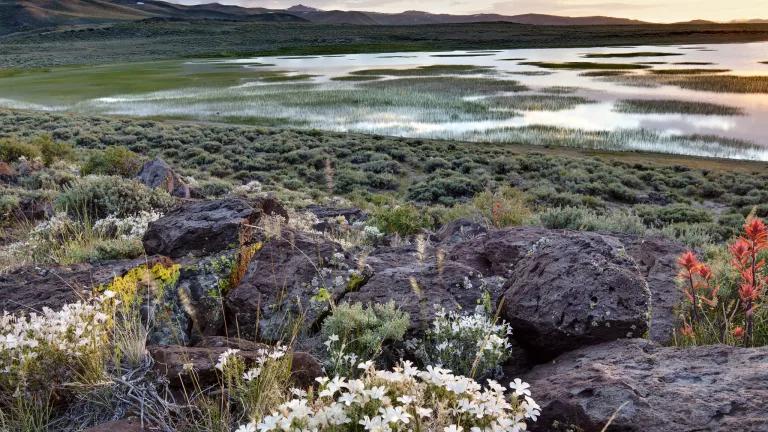Public Lands’ Fossil Fuels & Climate Change
Fossil fuel production has been an unmitigated environmental disaster for our public lands and waters. Coal mining and oil and gas drilling have irreparably despoiled millions of acres of oceans and lands, contaminated water supplies, dirtied the air, and brought multiple wildlife species to the brink of extinction. The burning of these fossil fuels also drives climate change, a critical threat that is already impacting America’s health, economy, and national security, according to the Fourth National Climate Assessment.
Arresting the advance of climate change is a paramount challenge, requiring the implementation of every tool in our box. That means we must stop locking-in expensive infrastructure that keeps us drilling long past the point when climate science tells us we must phase out fossil fuel utilization in favor of clean energy. The Federal Government has a unique opportunity and responsibility to manage the nation’s public lands and waters to accelerate this transition, not dig the climate hole deeper.
Federal Fossil Fuels
The fossil fuel industry has already stockpiled decades worth of reserves. Yet the Bureau of Land Management (BLM) has made 90% of the 248 million acres of land it manages and we all own available for oil and gas leasing; and the Trump administration is working overtime to open our oceans as well, regardless of the climate crisis or any demonstrable need. For example, only a third of the ocean area leased for offshore drilling is producing. Similarly, the majority of land leased by BLM is not producing. However, those lands and waters remain locked-up, held to pad companies’ valuations.
These are lands and waters that should instead be managed for the entire nation, not just for the benefit of interests of select private fossil fuel companies. These lands can be better utilized to advance the development of environmentally responsibly sited clean energy, the promotion of natural carbon capture, and put towards conservation and recreation to ensure future generations of Americans and wildlife can enjoy our natural resources as we do. To this end, the U.S. should end new fossil fuel leasing on federal lands to ensure our public lands stop working against our public interest.
The Climate Connection
Fossil fuels from federal lands produced the equivalent of nearly a quarter of the United States’ total carbon dioxide emissions over a 10-year period, according to a recent scientific analysis by the U.S. Geological Survey (USGS). Their greenhouse gas emissions (including methane and nitros) do only slightly less damage to the climate than the energy generated to power America's entire industrial sector in 2014 or the equivalent of 283 million passenger vehicles driven for one year.
Our ability to move past fossil fuels is diminished every time an offshore oil rig sinks its drill into the ocean floor, new ground is broken for a coal mine, or a new major oil or gas pipeline or export terminal is installed. These require expensive investments that incentivize their financiers to keep them in use, either extracting or transporting fossil fuels, for as long as possible—too long to address climate change. Therefore, it’s critical that we phase out these big-ticket carbon bombs in the near term.
Public Land Policy Solutions for the People
- Congress should legislate an eventual phase out of fossil fuel production on federal lands by ending all new leasing.
- Congress should legislate more responsible extractive practice under conditions that better serve the public interest. H.R. 4426 (115th Congress) provides several good models.
- The administration should expand the permanent protections from drilling that were put into place for large areas of the Arctic and Atlantic oceans.
- The administration should reinstate the moratorium on new coal leasing.
- The administration should reinstate policies requiring that the climate change costs and impacts resulting from all major federal actions are analyzed and disclosed to the public.
- The administration should reinstate Bureau of Land Management resiliency and adaptation policies previously in place to help address climate change impacts.
Key Stats
- Federal fossil fuels produced a volume of CO2 equal to nearly a quarter of the United States’ total carbon dioxide emissions in 2014, according to the USGS
- The drilling of oil and gas reserves just in the U.S. Arctic Ocean has the potential to release as much as much CO2 into the atmosphere when burned as emissions from all U.S. transportation modes over a 9 year time period.
- Ending new leasing could reduce global carbon dioxide emissions by an estimated 280 million tons annually by 2030.
- If we fail to make dramatic cuts in carbon pollution the U.S. could see $155 billion in lost wages per year by 2090 due to the effects of extreme temperature, one of climate change’s many economic damages.



